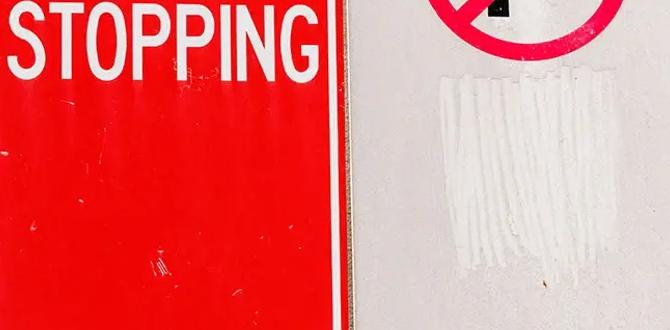Train stubborn dog comprehensively is a journey that requires patience, understanding, and the right techniques. Many dog owners find themselves wrestling with a canine companion who seems immune to basic commands, often labeling them as “stubborn.” However, what appears as defiance is more frequently a misunderstanding of cues, a lack of motivation, or an underlying issue that needs addressing. This comprehensive guide is designed to demystify the process, offering proven strategies and a clear roadmap to building a positive and effective training relationship, even with the most challenging pups.

Understanding the “Stubborn” Dog
Before diving into training methods, it’s crucial to understand why a dog might appear stubborn. It’s rarely about malicious intent. Instead, consider these possibilities:
Lack of Motivation: Your dog may not find your chosen rewards appealing enough. Kibble might not cut it when a squirrel is just outside the window. Experiment with high-value treats like small pieces of cheese, cooked chicken, or specialized training treats.
Misunderstood Cues: Are you using clear, consistent verbal commands and body language? Dogs learn through association, and if your signal is ambiguous, they won’t know what you’re asking.
Environmental Distractions: A bustling park is a sensory overload. Start training in a quiet environment and gradually introduce distractions as your dog progresses.
Physical or Mental Health Issues: Pain, anxiety, or cognitive decline can manifest as a refusal to cooperate. If you suspect an underlying health problem, consult your veterinarian.
Breed Tendencies: Some breeds are naturally more independent or have a stronger prey drive, which can make them seem less eager to please than others. This doesn’t mean they are untrainable, just that their motivations and learning styles might differ.
Past Negative Experiences: A dog that has been trained harshly or experienced fear during training may become withdrawn or defensive.
The Cornerstone of a Successful Train Stubborn Dog Guide: Positive Reinforcement
The most effective approach to training any dog, especially one described as stubborn, is positive reinforcement. This method focuses on rewarding desired behaviors, making it more likely for your dog to repeat them. Punishment-based methods can erode trust, create fear, and often suppress behavior without addressing the root cause.
1. Identify Your Dog’s Motivators: As mentioned, high-value rewards are key. This could also include praise, a favorite toy, or a game of fetch. Figure out what truly makes your dog light up.
2. Keep Training Sessions Short and Engaging: Aim for 5-10 minute sessions multiple times a day, rather than one long, arduous session. End each session on a positive note, with a success for your dog.
3. Be Consistent: The entire household needs to be on the same page with commands and rules. Inconsistency is a breeding ground for confusion and what appears to be stubbornness. Use the same words for the same actions every time.
4. Master the “Wait” and “Release”: Before dropping a treat or starting an exciting activity, have your dog wait. This teaches impulse control, a vital skill for any dog.
5. Clicker Training (Optional but Recommended): A clicker is a small device that makes a distinct “click” sound. The click acts as a precise marker, signaling to your dog the exact moment they performed the correct behavior, immediately followed by a reward. It bridges the gap between the action and the treat, improving clarity for the dog.
Essential Commands for Every Train Stubborn Dog Effortless Guide
Start with the basics and build from there. These foundational commands are indispensable:
“Sit”
Method: Hold a treat at your dog’s nose level. Move it slowly upwards and slightly back over their head. As their nose follows the treat, their rear end should naturally lower into a sit. The moment their rear touches the ground, click (if using a clicker) and give the treat. Once they consistently sit when you move your hand, start adding the verbal cue “sit” just as you begin the hand motion. Gradually phase out the hand lure, relying only on the verbal command.
“Stay”
Method: Once your dog reliably sits, ask them to sit. With your dog in a sit, say “stay” and hold your hand up in a “stop” gesture. Take one tiny step back. If they remain in place, return to them (don’t call them to you), click, and reward. Gradually increase the distance and duration of the stay. If they break the stay, calmly guide them back to their original spot and try again, making it easier (less distance or duration).
“Come” / Recall
Method: This is arguably the most critical command for safety. Start indoors in a distraction-free area. Get down on your dog’s level, use an excited tone, and say their name followed by “come.” When they move towards you, praise enthusiastically. Reward them the moment they reach you. Never punish your dog if they eventually come to you, even if it takes a long time. This is crucial for building trust. Gradually practice in more distracting environments. Always make coming to you the most rewarding thing they can do.
“Leave It”
Method: This command teaches your dog to ignore tempting items. Place a treat on the floor and cover it with your hand. Let your dog sniff or paw at your hand. The moment they pull away or look away from your hand, say “leave it,” click, and give them a different treat from your other hand. Once they understand, try leaving the treat uncovered on the floor, putting your foot over it if necessary. Reward them for disengaging from the dropped treat.
Troubleshooting Common “Stubborn” Dog Behaviors
Jumping Up: Reward for four paws on the floor. Turn away or walk away every time they jump. Only give attention when all four paws are down. Many owners find success using the phrase “off” or “down,” rewarding calmness.
Barking Excessively: Identify the trigger. If it’s at the door, start desensitization training by associating the doorbell with treats without the person entering. For barrier frustration, ensure they have enough mental and physical exercise. Teach an alternative behavior, like going to their mat.
Leash Pulling: Use a front-clip harness or head halter. Stop walking every time the leash becomes taut, and only start again when the leash loosens. Reward slack leash walking.
Chewing: Provide appropriate chew toys and redirect chewing to these items. Ensure your dog receives sufficient exercise and mental stimulation, as boredom is a common cause of destructive chewing.
The Importance of Patience and Positive Outlook
Training a supposedly stubborn dog is a marathon, not a sprint. There will be good days and bad days. Celebrate the small victories. Don’t compare your dog’s progress to others. Focus on building a strong bond based on mutual respect and understanding. A truly “stubborn” dog is often just a dog that hasn’t yet found the right communication channel with their human. By employing the principles of positive reinforcement, maintaining consistency, and understanding your dog’s individual needs, you can indeed reveal an effortless guide to training even the most resilient canine companion.
Meet Elyse Colburn, the devoted canine companion and storyteller behind the enchanting world of “Tales, Tails, and Adventures Unleashed.” A passionate dog enthusiast with a heart full of paw prints, Elyse Colburn shares heartwarming tales and insightful adventures, celebrating the joy, loyalty, and endless antics that make every dog a true hero. Join Elyse Colburn on this tail-wagging journey, where every post is a love letter to our four-legged friends.








